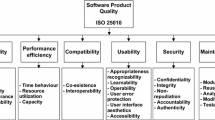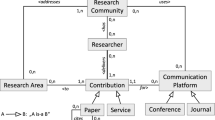Abstract
One of the most critical phases of software engineering is requirements elicitation and analysis. Success in a software project is influenced by the quality of requirements and their associated analysis since their outputs contribute to higher level design and verification decisions. Real-time software systems are event driven and contain temporal and resource limitation constraints. Natural-language-based specification and analysis of such systems are then limited to identifying functional and non-functional elements only. In order to design an architecture, or to be able to test and verify these systems, a comprehensive understanding of dependencies, concurrency, response times, and resource usage are necessary. Scenario-based analysis techniques provide a way to decompose requirements to understand the said attributes of real-time systems. However they are in themselves inadequate for providing support for all real-time attributes. This paper discusses and evaluates the suitability of certain scenario-based models in a real-time software environment and then proposes an approach, called timed automata, that constructs a formalised view of scenarios that generate timed specifications. This approach represents the operational view of scenarios with the support of a formal representation that is needed for real-time systems. Our results indicate that models with notations and semantic support for representing temporal and resource usage of scenario provide a better analysis domain.




















Similar content being viewed by others
References
Jacobson I, Christerson M, Jonsson P, Overgaard, G (1992) Object-oriented software engineering–a use case driven approach. Addison-Wesley, Reading, MA
Weidenhaupt K, Pohl K, Jarke M, Haumer P (1998) Scenarios in system development: current practice. IEEE Softw 15(2):34–45
Ekelin C, Jonsson J (1996) Real-time system constraints: Where do they come from and where do they go? In: Proceedings of the International Workshop on Real-Time Constraints, Alexandria, VA, October 1999, pp 53-57
Amyot D, Mussbacher G (2000) On the extension of UML with use case maps concepts. In: Proceedings of UML2000, York, UK, October 2000. Lecture notes in computer science, vol 1939. Springer, Berlin Heidelberg New York, pp 16-31
Glinz M (2000) Improving the quality of requirements with scenarios. In: Proceedings of the Second World Congress for Software Quality (2WCSQ), Yokohama, September 2000, pp 55–60
Glinz M (2000 Problems and deficiencies of UML as a requirements specification language. Proceedings of the 10th International Workshop on Software Specifications and Design (IWSSD-10), San Diego, November 2000, pp 11–22
Glinz M (2000) A lightweight approach to consistency of scenarios and class models. In: Proceedings 4th IEEE International Conference on Requirements Engineering. Schaumburg, IL, June 2000, pp 49–58
Harel D (1987) StateCharts: a visual formalism for complex systems. Sci Comput Program 8:231–274
Regnell B, Andersson M, Bergstrand J (1996) A hierarchical use case model with graphical representation. In: Proceedings of ECBS’96, IEEE International Symposium and Workshop on Engineering of Computer-Based Systems, March 1996
Message Sequence Chart (MSC) (1993) ITU-T Recommendation Z.120, International Telecommunication Union
Buhr R, Casselman R (1996) Use case maps for object-oriented systems. Prentice Hall
Hsia P, Samuel J, Gao J, Kung D (1994) Formal approach to scenario analysis. IEEE Softw 11(2):33-41
Leveson N, Heimdhal H, Hildreth H, Reese J (1994) Requirements specifications for process-control systems: lessons learned and steps to the future. IEEE Trans Softw Eng 20(9):684-706
Some S, Dssouli R, Vaucher J (1995) From scenarios to timed automata: building specifications from users requirements. Asia Pacific Software Engineering Conference, December 1995
Barbacci M, Carriere S, Feller P, Klien M, Kazman R, Lipson H, Longstaff T, Weinstock C (1998) Steps in an architecture tradeoff analysis method: quality attribute models and analysis. Technical Report TR-97–029. Software Engineering Institute, Pittsburgh, PA
Saiedian H, Dale R (2000) Requirements engineering: making the connection between the software developer and customer. Information and Software Technology 42(4):419–428
Author information
Authors and Affiliations
Corresponding author
Additional information
H. Saiedian is a member of the Information & Telecommunication Technology Center at the University of Kansas. His research was partially supported by a grant from the National Science Foundation (NSF).
Rights and permissions
About this article
Cite this article
Saiedian, H., Kumarakulasingam, P. & Anan, M. Scenario-based requirements analysis techniques for real-time software systems: a comparative evaluation. Requirements Eng 10, 22–33 (2005). https://doi.org/10.1007/s00766-004-0192-6
Received:
Accepted:
Published:
Issue Date:
DOI: https://doi.org/10.1007/s00766-004-0192-6




